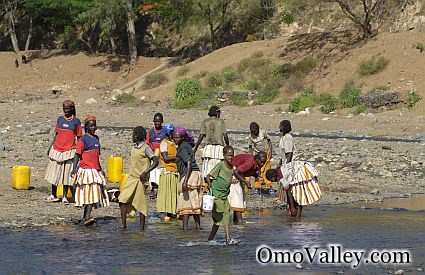Omo River
There are many national parks located in Ethiopia. Many of them being home to an abundance of wild life. However there are two major National Parks located in Omo Valley. One of the most remote National Parks in the world is Omo National Park. Mago National Park is east of Omo and is separated by the Omo River.
The river flows south and runs between the Omo National Park and Mago National Park. Both of these parks are known for their exotic wildlife that inhabits them; making the river a vital resource for their survival.
The Omo River is also a lifeline for the Ancient African tribes that live in the Omo Valley. The river is used for irrigation, food, drinking water, bathing, washing and entertainment. Hominid fossils have been found all along the river banks and the earliest existence of mankind is believed to have started there. Scientist believe that the river was an artery of life and because of the fossils found there, it has been declared a World Heritage Site.
Ever year the river floods, providing the soil much needed irrigation for the tribes to grow their food. Many of the natives cultivate crops on the banks of the river. In 2006, heavy rains flooded the river causing many deaths. Experts blame deforestation for this particular tragedy, claiming the rivers are unable to hold as much water. Also in 2006, construction of the Gibe III dam began causing a large debate on the possible damage it will cause to the ecosystem, animals and local tribal communities.
